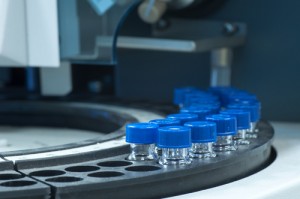 New advances in the field of pulmonary hypertension research conducted at the Ludwig Boltzmann Institute for Lung Vascular Research may lead to a variety of applications to benefit patients with chronic thromboembolic pulmonary hypertension (CTEPH). A specific inflammatory molecule known as interferon-γ-induced protein-10 (IP-10) was shown to be associated with poor hemodynamic function and physical capability of CTEPH patients, indicating the molecule may be useful in developing treatments or non-invasive diagnostics. The team described their findings in “Comprehensive Analysis of Inflammatory Markers in Chronic Thromboembolic Pulmonary Hypertension Patients,” published in European Respiratory Journal.
New advances in the field of pulmonary hypertension research conducted at the Ludwig Boltzmann Institute for Lung Vascular Research may lead to a variety of applications to benefit patients with chronic thromboembolic pulmonary hypertension (CTEPH). A specific inflammatory molecule known as interferon-γ-induced protein-10 (IP-10) was shown to be associated with poor hemodynamic function and physical capability of CTEPH patients, indicating the molecule may be useful in developing treatments or non-invasive diagnostics. The team described their findings in “Comprehensive Analysis of Inflammatory Markers in Chronic Thromboembolic Pulmonary Hypertension Patients,” published in European Respiratory Journal.
Tissue from eight individuals with CTEPH who were undergoing pulmonary endarterectomy, a procedure used to remove blood clots from the pulmonary arteries, were collected for analysis. Serum from 16 CTEPH and 11 idiopathic pulmonary arterial hypertension patients was also collected. Serum results were compared against those from healthy control patients.
Detailed analyses revealed an elevated level of IP-10, as well as four other proteins characterized as inflammatory markers, in the lungs of CTEPH patients compared to healthy donors. This was reflected by serum samples, but in the case of idiopathic pulmonary arterial hypertension, only IP-10 and monokine induced by interferon-γ (MIG) were elevated.
[adrotate group=”4″]
Another difference between CTEPH and idiopathic pulmonary arterial hypertension patients was a correlation between IP-10 and functional ability. CTEPH patients had a shorter six-minute walking distance and lower cardiac index and carbon monoxide diffusion capacity when they had higher levels of IP-10. For idiopathic pulmonary arterial hypertension patients, there was no correlation.
The work was motivated by previous findings that IP-10, also known as CXCL10, leads to human pulmonary artery endothelial cell dysfunction. This is the first study to connect IP-10 secretion to pulmonary hemodynamics and physical capability in CTEPH patients. By testing the hypothesis that IP-10 is involved in pulmonary artery remodeling and discovering its presence in tissue and serum, the team at the Ludwig Boltzmann Institute may motivate future studies for CTEPH-related therapies and diagnostics.

